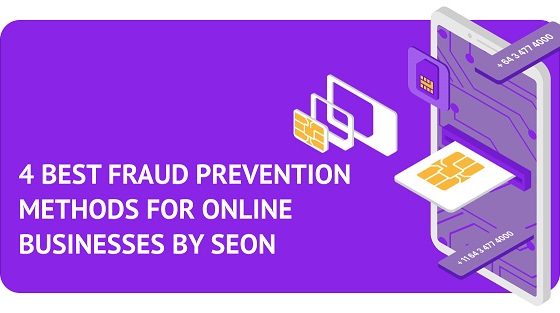It is no secret that fraudsters can cause many online businesses a great deal of financial difficulty and distress. From fake accounts to reverse chargebacks, you could become a target of a malicious network of fraudsters.
That is why to protect yourself; the right prevention methods have to be implemented into your business from the start. Here are five tips to help anyone secure their business and prevent fraudsters from utilizing loopholes in their business.
Get to know your customers
Imagine providing an online service with a sign-up form or an application system that your customers need to fill out. By implementing the right KYC (Know-Your-Customer) processes, you can enforce certain identity verifications.
In most cases, businesses can ask for a name, email, phone number and other basic data.
However, more complex authentication steps such as the ones used by Etoro or Coinbase require a selfie ID, a photo of your passport or phone verification.
Should every online institution use this with money on the table? It depends. Heavy KYC processes with many verifications can push your future customers away who will lose patience and leave for an alternative service.
So the question every online businesses should ask itself is, how to balance security and friction?
The idea is to get the minimum amount of information about your customers to get a full view of them while not dragging them down with too many requirements.
There are three most basic datasets you will require to ensure your website’s security:
- Email address: You can limit your entry-point to business domain emails and exclude all common email domains like protonmail, Gmail, or yahoo. If your business is more B2C, you can
- Phone number: when it comes to phone numbers, the things to look at is whether the user linked it with Whatsapp or a Messenger app. When they pay with a credit, does it have the same country as the country code of the caller?
- IP Address: An IP analysis can assist with this problem. What you have to keep an eye on is the TOR connection, proxy and emulator.
Is the IP address far from a cardholder’s billing address? If yes, it’s an immediate red flag, and you know it’s probably a fraudster!
Implement fraud scoring metrics
There are two ways anyone can implement fraud prevention metrics. Through manual implementation, you limit certain qualities.
Make an applicant eligible to use your services and thus prevent fraudulent behaviour. The idea here is to give a score (from 1 to 100) to examine how risky a transaction is.
The second, and probably more straightforward method, is through automation that runs through a fraud detection engine that can calculate risk scoring.
Now, this might sound not very clear, so here’s an example. Let’s say that you run an online businesses lending system or eCommerce store.
You can use this fraud detection engine that gathers transaction data from users, creating its own set of rules through machine learning.
What you’d want to do is run a set of custom rules like email domain verification, social media presence and ID verifications.
Your fraud prevention engines can set scores to whether block or allow a transaction to go through. If a person applies or makes a transaction or wants to take a loan with an email account, name or social media accounts that do not match, it will likely be rejected by the engine.
Adopt Machine Learning Services
The terms artificial intelligence and machine learning might sound intimidating, but a good fraud prevention system with machine learning should be fairly intuitive.
The idea of machine learning is probably a bit over the top when we mention it. It may sound like a very sophisticated topic at first, but even a few rules installed into a system can analyze basic data (both current and historical.)
Let’s assume that you’ve used the earlier mentioned KYC processes and a fraud prevention engine that isolates suspicious accounts and transactions.
This is when the learning models of your machine learning system can collect historical data points that will suggest new rules. These rules will help create limitations to fraudulent activities you haven’t even thought of.
Let’s go with a common example. Let’s assume that you are running an online store or dropshipping company that uses a machine learning system to factor in certain risky elements of fraudsters.
Talking from experience, many scammers or online fraudsters will buy clothes with similar sizes while demanding chargebacks.
These things are very hard to observe with the human eye when running a large online store. But the machine learning system can filter these behaviours based on pure data and find connections that were previously invisible to avoid more chargebacks.
Digital Footprint analysis
If you are unfamiliar with the term, digital footprint analysis is basically what helps you track users across incognito browsing and virtual machines. This can be incredibly useful to analyze specific patterns in your page visitors’ behaviour.
There is one digital analysis module that all online businesses should use to limit fraud. One is a term that is known as device fingerprinting.
This information collection tool generates browsers. And device fingerprint IDs, which help you track users through thousands of data and compare to identify wrong users.

